Serving 536 students in grades Prekindergarten-8, Garland Elementary School ranks in the bottom 50% of all schools in Wisconsin for overall test scores (math proficiency is bottom 50%, and reading proficiency is bottom 50%).
The percentage of students achieving proficiency in math is 16% (which is lower than the Wisconsin state average of 39%). The percentage of students achieving proficiency in reading/language arts is 18% (which is lower than the Wisconsin state average of 38%).
The student:teacher ratio of 19:1 is higher than the Wisconsin state level of 13:1.
Minority enrollment is 69% of the student body (majority Asian and Hispanic), which is higher than the Wisconsin state average of 33% (majority Hispanic and Black).
Quick Stats (2025)
- Grades: Prekindergarten-8
- Enrollment: 536 students
- Student:Teacher Ratio: 19:1
- Minority Enrollment: 69%
- Overall Testing Rank: Bottom 50% in WI
- Math Proficiency: 16% (Btm 50%)
- Reading Proficiency: 18% (Btm 50%)
- Science Proficiency: 15-19% (Btm 50%)
- Source: National Center for Education Statistics (NCES), WI Dept. of Education
Top Rankings
Garland Elementary School ranks among the top 20% of public schools in Wisconsin for:
Category
Attribute
Diversity
Percent Eligible For Free Lunch
School Overview
Garland Elementary School's student population of 536 students has declined by 14% over five school years.
The teacher population of 28 teachers has declined by 6% over five school years.
Grades Offered
Grades Prekindergarten-8
(offers virtual instruction)
(offers virtual instruction)
Total Students
536 students
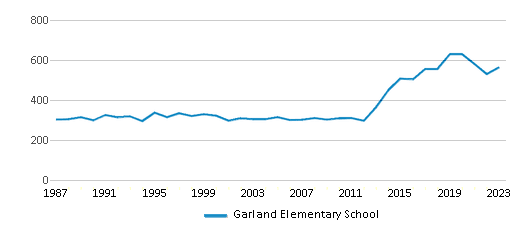
Gender %

Total Classroom Teachers
28 teachers
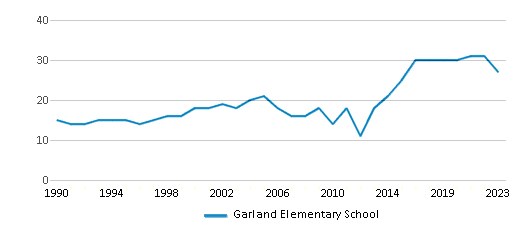
Students by Grade
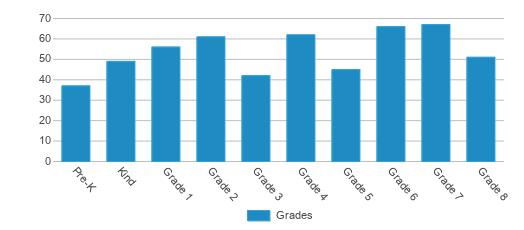
School Rankings
Garland Elementary School ranks within the bottom 50% of all 1,991 schools in Wisconsin (based off of combined math and reading proficiency testing data).
The diversity score of Garland Elementary School is 0.75, which is more than the diversity score at state average of 0.53. The school's diversity has stayed relatively flat over five school years.
Overall Testing Rank
#1779 out of 1991 schools
(Bottom 50%)
(Bottom 50%)

Math Test Scores (% Proficient)
16%
39%
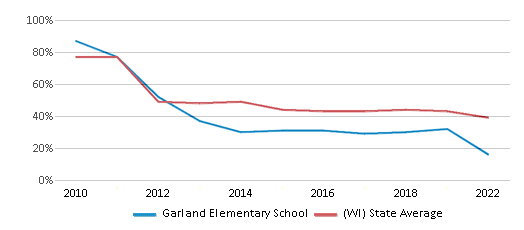
Reading/Language Arts Test Scores (% Proficient)
18%
38%
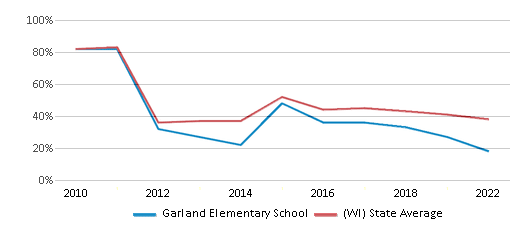
Science Test Scores (% Proficient)
15-19%
44%
Student : Teacher Ratio
19:1
13:1
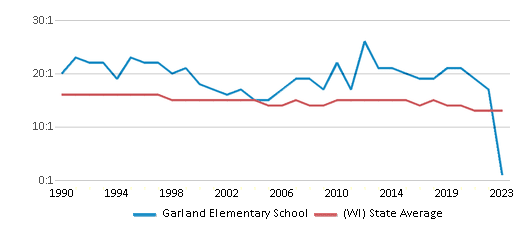
American Indian
n/a
1%
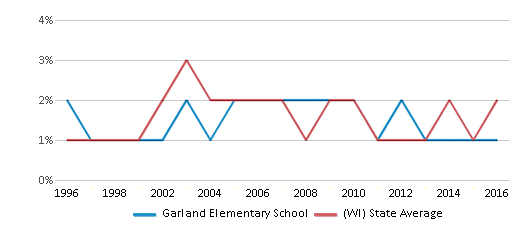
Asian
32%
4%
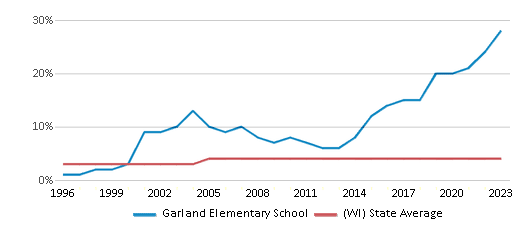
Hispanic
22%
14%
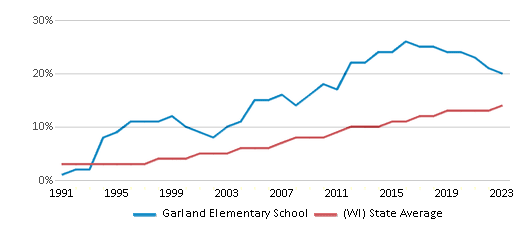
Black
11%
9%
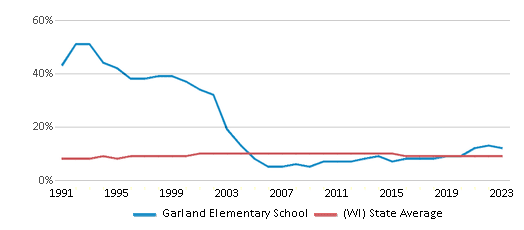
White
31%
67%
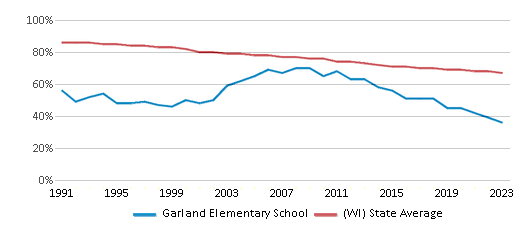
Hawaiian
n/a
n/a
Two or more races
4%
5%
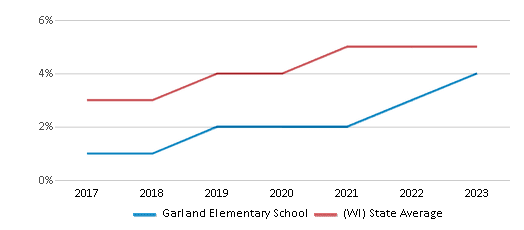
All Ethnic Groups
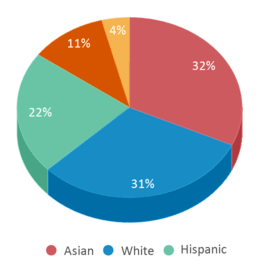
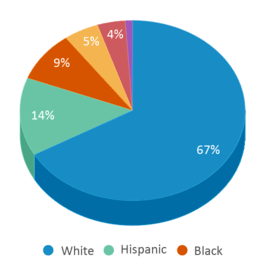

Participates in the National School Lunch Program (NSLP)
Yes
Eligible for Free Lunch
87%
37%
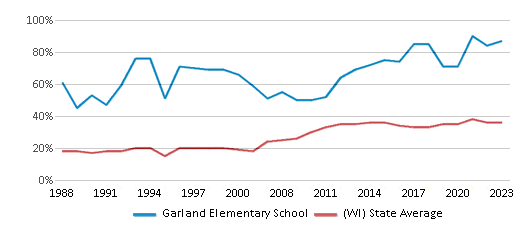
Eligible for Reduced Lunch (19-20)
3%
5%
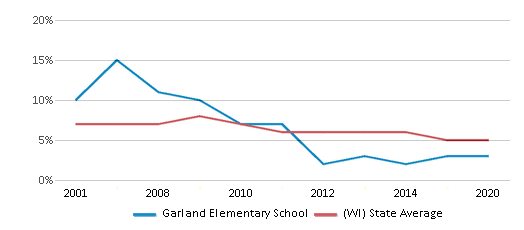
School Statewide Testing
School District Name
Source: National Center for Education Statistics (NCES), WI Dept. of Education
Profile last updated: 02/09/2025
Frequently Asked Questions
What is Garland Elementary School's ranking?
Garland Elementary School is ranked #1779 out of 1,991 schools, which ranks it among the bottom 50% of public schools in Wisconsin.
What schools are Garland Elementary School often compared to?
Garland Elementary Schoolis often viewed alongside schools like Greenfield Middle School by visitors of our site.
What percent of students have achieved state testing proficiency in math and reading?
16% of students have achieved math proficiency (compared to the 39% WI state average), while 18% of students have achieved reading proficiency (compared to the 38% WI state average).
How many students attend Garland Elementary School?
536 students attend Garland Elementary School.
What is the racial composition of the student body?
32% of Garland Elementary School students are Asian, 31% of students are White, 22% of students are Hispanic, 11% of students are Black, and 4% of students are Two or more races.
What is the student:teacher ratio of Garland Elementary School?
Garland Elementary School has a student ration of 19:1, which is higher than the Wisconsin state average of 13:1.
What grades does Garland Elementary School offer ?
Garland Elementary School offers enrollment in grades Prekindergarten-8 (offers virtual instruction).
What school district is Garland Elementary School part of?
Garland Elementary School is part of Milwaukee School District.
In what neighborhood is Garland Elementary School located?
Garland Elementary School is located in the Gra Ram neighborhood of Milwaukee, WI.
School Reviews
2 3/26/2020
I've dealt with terrible problems at this school. In October, I had to make a district complaint because a teacher physically restrained my child as he was trying to get in my car. School leadership failed to address my concerns and was less than empathetic. I had to witness a teacher being physical with my child and it SCARY. I've never dealt with anything like that before and there was no reason for him to be manhandled by a teacher! Cut to just 1 month later and my son was given a black eye. I just learned today he's still in the same classes as the bully who hit him. WHY?! I addressed that with the principal and got zero empathy. Leadership there have a very lackadaisical approach to disciplining students. The child who gave my son a black eye wasn't even suspended from school. My son now has a permanent knot on the side of his eye and no one has even said they're sorry he experienced that. Everything there seems to be reactive and the reactions are just simply inadequate.
Review Garland Elementary School. Reviews should be a few sentences in length. Please include any comments on:
- Quality of academic programs, teachers, and facilities
- Availability of music, art, sports and other extracurricular activities
Recent Articles

What Is A Charter School?
Explore the world of charter schools in this comprehensive guide. Learn about their history, how they operate, and the pros and cons of this educational innovation. Discover key facts about charter schools, including admission policies, demographics, and funding, as well as what to look for when considering a charter school for your child.

10 Reasons Why High School Sports Benefit Students
Discover the 10 compelling reasons why high school sports are beneficial for students. This comprehensive article explores how athletics enhance academic performance, foster personal growth, and develop crucial life skills. From improved fitness and time management to leadership development and community representation, learn why participating in high school sports can be a game-changer for students' overall success and well-being.

February 05, 2025
Understanding the U.S. Department of Education: Structure, Impact, and EvolutionWe explore how the Department of Education shapes American education, from its cabinet-level leadership to its impact on millions of students, written for general audiences seeking clarity on this vital institution.









